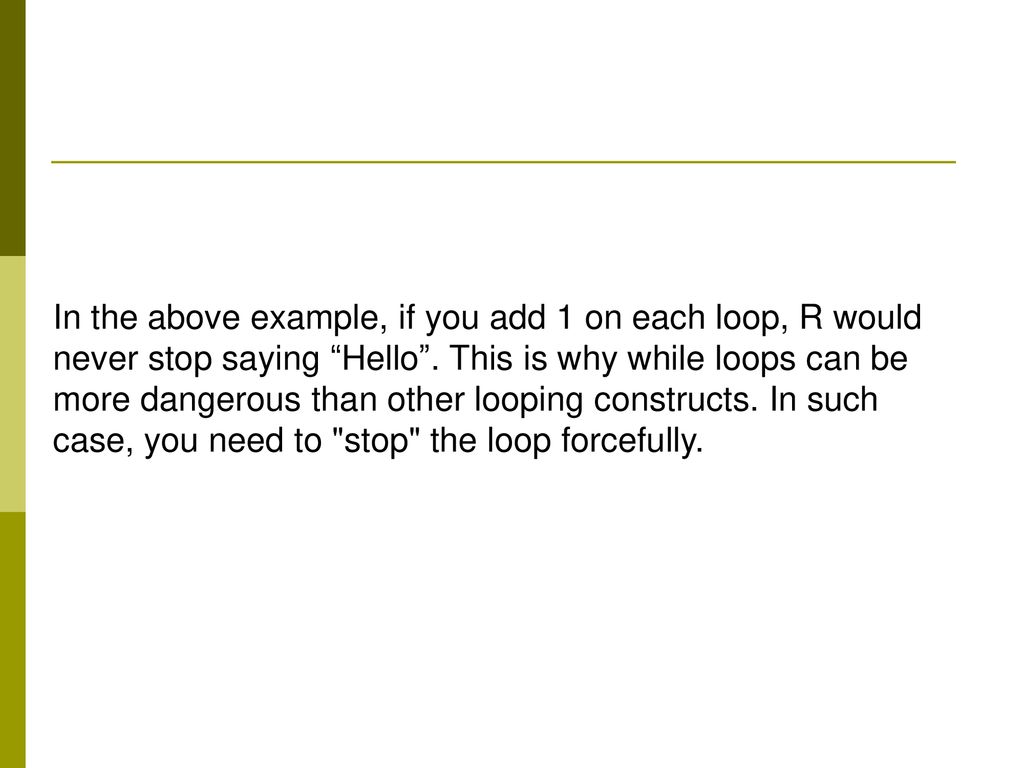


#STOP LOOP IN R PLUS#
An R-loop is a nucleic acid structure consisting of two antiparallel DNA strands plus one RNA strand.
#STOP LOOP IN R HOW TO#
Read more with Noam Ross’s blog post on vectorization. Chedin, in Encyclopedia of Genetics, 2001. Simple Python Problem: How to stop the loop using users input Hello How can I make the program stop asking for the numbers when the user entered the number 0 (zero) Heres my code so far, but its wrong because when I entered 0 on the fourth line, it still keeps asking for number to enter. After reaching the end, the loop continues by assigning the second value to the loop variable. On the contrary, for vectorized functions, these questions must be answered only once, which saves a lot of time. For loops in R always iterate over a sequence (a vector). These questions must be answered for each iteration, which takes time. Here, the vectorized function is much faster than the two others and the for-loop approach is faster than the sapply equivalent when just-in-time compilation is enabled.Īs an interpreted language, for each iteration res <- x + y, R has to ask:Ĭan I add these two types? what is the type of x + y then?Ĭan I store this result in res or do I need to convert it? Either we can directly call the functions like stop() or warning(), or we can use the error options such as warn or warning.expression. This helps if you are trying to combine a different data type into your list object, or create a new list with individual elements of a different type in R.įor more information about handy functions for manipulating data, check out our functions reference.# LOOP 8762.638 10646.571 12672.2114 11206.1365 12772.3280 35368.977 100 Note that we’ve abstracted the new value into a variable you can easily create a loop to iterate through another data structure or process (parse a document, query an API, scrape the web) to generate more sophisticated forms of data and pass results to newelem for insertion in the existing list.You’re working with part of the core R library – this append function runs extremely quickly, appending multiple elements to the given list in a sequence very quickly, as apposed to a generic apply function or regular expression.Specific advantages of this approach include This video accompanies the article 'What Is Stop' published in The Loop, June issue, 2013. Why not just use the c() function to append values to a list? Syntax would be as follows: # R using c function to append values to list This approach has the disadvantage of being too simple (hah hah).

Use of the c() function to append to lists in R This approach makes for more succinct code. This means that it’s possible to wrap up for loops in a function, and call that function instead of using the for loop directly. # r add elements to list using list or vector as sourceĪppend (first_vector, c(value1, value2, value3), after=5) For loops are not as important in R as they are in other languages because R is a functional programming language.


 0 kommentar(er)
0 kommentar(er)
